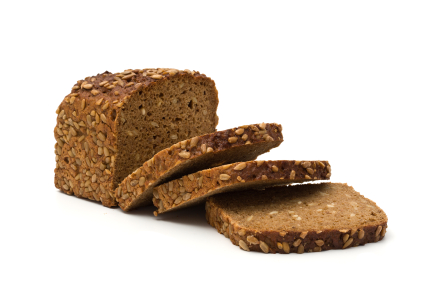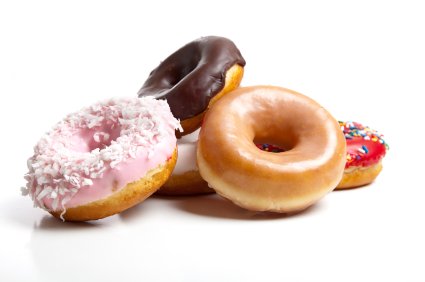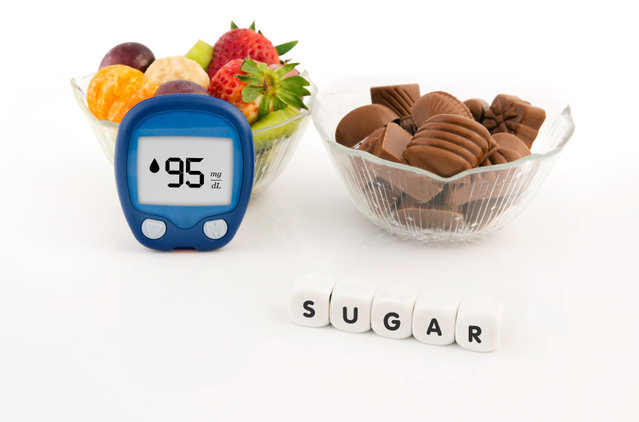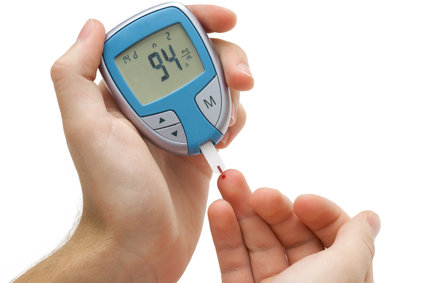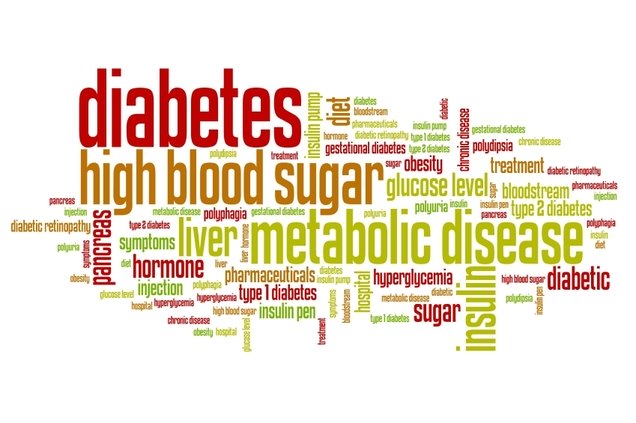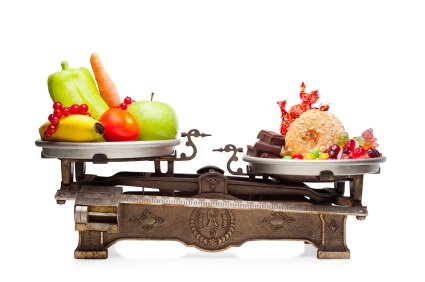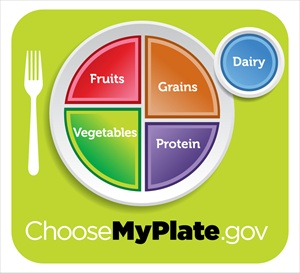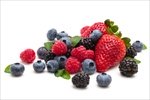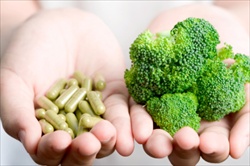Don't Rock the Blood Sugar Boat - Tips on Finding Low Glycemic Foods
What is the benefit of low glycemic foods?
In short, they can stabilize blood sugar levels.
Including as many of foods in your diet that have a minimal effect on blood sugar is the way to go, when it comes to avoiding the pitfalls (excuse the pun) of roller coaster blood sugar.
Low Glycemic
Diets explain this in detail.
Fluctuating blood sugar levels, whether peaks or lows, pose a serious health threat, especially if the problem persists long term. Low glycemic foods keep blood sugar stable and help prevent or reverse the following conditions:
|
What is Metabolic Syndrome? - symptoms include (i) excess fat around the middle (an apple shape); (ii) high blood pressure; (iii) high blood sugar levels; and (iv) high cholesterol (HDL); People suffering metabolic syndrome are at especially high risk for diabetes and cardiovascular disease. Low glycemic foods may be part of the treatment as part of a weight loss program. |
- Metabolic Syndrome;
- Insulin Resistance or pre-diabetes;
- Type II Diabetes;
- Inflammatory conditions that are a result, in whole or part, of excess blood sugar and its damaging effects on blood vessels. These conditions run the gamut of cardiovascular disease including atherosclerosis, heart attack and stroke - diabetic neuropathy that can involve nerve pain, weakness and numbness - ulcers and poor wound healing - kidney disease - bacterial and fungal infections - and diabetic retinopathy (damaged blood vessel in the eye);
- Poor immune function;
- High Triglycerides;
- Fat Accumulation;
- Cancer especially pancreatic, endometrial, urinary and melanoma; and
- Hypoglycemia (low blood sugar)
Check out Jenny Ruhl's book
for more details about the health effects of unstable blood sugars.
| The Link between Low Glycemic Foods and Preventing
Hypoglycemia (low blood sugar) Ironically low glycemic foods can prevent hypoglycaemia, routinely a consequence of the flood of insulin that occurs when blood sugar spikes too high too quickly. Hypoglycemia can lead to food cravings, dizziness and brain fog and is the dieter’s nemesis, because it leads to binge eating and dieter’s remorse. Low glycemic foods can help stabilize blood sugar. |
It’s an impressive number of reasons
- to consume low glycemic foods when the opportunity arises, and,
- to combine nutritious and healthy high glycemic foods with lower glycemic fare to minimize undue effect on blood sugar levels.
So far so good…
Picking Low Glycemic Foods – Which Foods Raise Blood Sugar
When it comes to blood sugar, carbohydrates – the starches and sugars in food - raise blood sugar, not fat or protein (except in certain situations if your diabetes is so extreme that you start burning protein for energy). Knowing the GI or Glycemic Load of a food will tell you how much the carbohydrate in that food will raise blood sugar.
While pure sugar or glucose is 100%
carbohydrate and butter is
almost entirely 100%
fat, most foods are a combination of carbohydrates, fats and protein, with some containing more of one than
another. The challenge is that most foods are a combination of carbs, proteins
and fats and you may not be sure proportions and how they will affect blood sugar.
|
What’s Wrong with Rock’n Roll Blood Sugar and Why Low Glycemic Foods are Important . As well as high sugar and high insulin, which occurs in the case of unmanaged insulin resistance, metabolic syndrome and Type II diabetes, fluctuating blood sugar can 1. damage blood vessels; 2. raise triglyceride levels; 3. lower your immune response; 4. encourage fat accumulation over energy burning; and 5. promote inflammation. |
Low Glycemic Foods Facts - What about Carbs? Why not ditch them from your diet?
While carbohydrate in food converts into sugar in the blood, don’t throw all carbs out with the bath water as some diet gurus might suggest.
You need carbohydrates for good health. Carbohydrate foods include many nutritious plant foods that contain a surfeit of vitamins, minerals, enzymes, prebiotics, and flavonoids, essential for long term health and prevention of chronic diseases including heart disease, diabetes and cancer.
|
Glycemic Index versus Glycemic Load - Glycemic Index (GI) – tracks how fast carbohydrate in food raises your blood sugar compared to pure glucose. A food that raises blood sugar quickly has a high GI; one that raises it slowly or not at all has a low GI. Glycemic Load (GL), by contrast, gives a more complete picture of the effects of a carbohydrate on blood sugar because, in addition to measuring the ability of a food’s carbohydrate to raise blood sugar, it tracks how much of that carbohydrate is in the food. The result is that GL measures more accurately than GI does how a quantity of food will affect your blood sugar, for better or worse. |
The secret to avoid blood sugar highs is
not to nix carbs
entirely from your diet – Every fruit,
veg, legume and grain contains carbs so that would be nutritional suicide.
The key to is to source healthy fats and protein foods and moderate your carb intake, avoiding the high glycemic nutritionally depleted junk and focus on nutritionally dense low glycemic versions.
Tip for finding healthy Low Glycemic Foods:
1. When picking low GL carbs, the more complex the carbohydrate the less the effect on blood sugar. Simple sugars move quickly into the blood; complex carbs, having more molecular bonds, take longer to be digested and hit the blood stream. The effect is a gentler effect on blood sugar levels.
- So pick complex carbohydrates like beans, lentils, whole grains like brown rice, brown flour, over their processed cousins white rice, white flour and white pasta.
- Eat whole grain toast versus white toast. Rye bread over wheat bread. Seed breads over simple wheat breads.
- When eating fruit focus on lower GL berries including strawberries, blueberries, blackberries, raspberries etc.
- When eating veg, aim to consume lower GL varieties including spinach, green beans, artichokes, peppers, broccoli, cabbage.
2. The more raw and less processed the better – peeled raw carrots have a lower GL than a serving of purred carrots. Cooking breaks down fiber and concentrates sugars, increasing a food's overall GL.
- Old fashioned cooking oats soaked overnight have a lower GL than instant cooking oats prepared from a package.
3. Eat foods where the original fibre is kept intact and not removed or destroyed. Fibre in food, especially the insoluble kind found in whole fruits, veg and whole grains and legumes, moderates blood sugar both slowing absorption of food and encouraging proliferation of healthy gut bacteria that assists digestion and maintaining blood sugar.
- Orange Juice and other fruit juices have a higher GL than the original orange or fruit containing all the pulp. Make water your drink of choice and skip fruit juices for the whole fruit.
- Cooking and processing food, including fine milling, macerating and even chewing, breaks down fiber and makes the food spike blood sugar quicker. But don’t not chew your food well – chewing is key to getting the nutrients you need from food.
- Processed foods including white breads and pastas have had the fiber as well as the fatty germ of the grain removed and for this reason increases blood sugar quicker than whole grains .
4. Avoid foods with added sugars or concentrated natural sugars whatever the name, especially ones you drink. Drinking your calories and concentrated sugars is an easy way to send your blood sugar levels to the moon.
- Despite what some say, the effect of fructose including the ubiquitous High Fructose Corn syrup (HFC) on blood sugar is similar to glucose and sucrose (table sugar). Avoid added sugars especially those in sodas, juices, and other drinks because it is easy to ingest vast amounts of blood sugar spiking fluid before feeling full.
| Sugar Everywhere Beware the many guises sugar can wear on a food label. Some common aliases include fructose, glucose, sucrose, glucose solids, diastatic malt,ethyl maltol, dextran, cane juice crystals, crystalline fructose, buttered syrup, blackstrap molasses, molasses, caramel, maltose, galactose, high fructose corn syrup (HFC), invert sugar, demerara, sugar, Barbados sugar, castor sugar, invert sugar, honey, fruit juice concentrate, treacle, syrup, sorghum syrup, evaporated cane juice, refiner's syrup, raw sugar, organic raw sugar, xylose, saccharose, confectioner's sugar,golden syrup, rice syrup, fruit juice, muscavado sugar, maltodextrin, maple syrup, date sugar, brown sugar, yellow sugar, agave nectar, or lactose. Because food manufacturers must list all ingredients by weight, they sometimes choose to list various types of sugar to disguise the fact that the product is laced with the sweet stuff. Thanks to Robert Lustig's Fat Chance for the above list. |
- Dilute juices with water, including those freshly squeezed, or drink in small quantity. An 8 oz. (235 ml) glass of orange juice may contain the juice from 8 to 10 oranges, not something you’d eat if peeling your own. It's no surprise that the effect on blood sugar can be drastic.
- While the best approach is to get used to less sweet in your diet generally (that takes about 3 weeks to train your or your family’s taste buds to the new sensation – very doable with the plus that you’ll “taste” the natural sugars in fruits and veg and whole grains unlike you ever did before), there are lower glycemic sweetener alternatives that aren’t artificial chemicals which carry their own, as yet, undetermined risks. One of these is agave nectar; another Stevia.
5. Avoid the high glycemic sugar boosted foods in your family’s diet with a particular focus on breakfast when fasting blood sugar levels are normally their highest. Higher than normal fasting glucose levels are due to the morning surge of wake up hormones including cortisol, noradrenaline and adrenaline that kicks in starting around 5 am to help you wake.
- choose low fiber breakfast cereals like old fashioned oats over fiber-deficient boxed cereals;
- pick low GL bread made from whole grain rye over commercial baked goods chockablock with added sugar and white grains;
- opt for the plain sugarless yogurt over the flavoured highly sugared kinds;
- nix the fruit juice in favour of a whole orange, apple or basket of berries;
- consume some
quality protein and fats in the form of eggs, smoked or grilled fish,
peanut butter or other nut butters. See below.
6. When consuming higher glycemic carbs, eat them with healthy fat and protein foods. Remember that fat and protein rate zero on the GL scale so can be used to lower the glycemic effect of a carbohydrate food, if consumed alongside a protein or healthy fat food.
- The key is to pick healthy fats like Omega 3 rich nuts, fish and seeds and avoid unhealthy fats like trans fats found in many processed foods (they are often high GL for other reasons) or excess saturated fats when doing this. A healthy balanced diet is more than just watching blood sugar.
- Eat raisins or other dried fruit with nuts or seeds. To obtain a gamut of nutrients try a variety of nuts and seeds including walnuts, almonds, flax seeds, sesame seeds, pine nuts, pumpkin, sunflower, chia seeds, sunflower seeds, macademia, hazelnuts and filberts.
- Consume your grains with grilled fish or seafood especially Omega 3-rich salmon, sardines, tuna, herring and anchovies.
- Eat your whole grain toast with peanut butter or anothe favourite nut butter. Try sun butter made from sunflower seeds, macadamia or hazel nuts. Avoid nut butters with added sugar.
- Sprinkle grated parmesan or Swiss cheese, or chopped walnuts, sunflower seeds or pine nuts on your portion of pasta.
- Eat your fresh fruit with a serving of plain yogurt.
7. Avoid commercial baked goods unless they are lower sugar, high fiber and trans fat-free. Commercially baked bran muffins are often chock-a-block with sugar and white flour – the minimal bran does little to reduce the effect on blood sugar.
Use the below table to pick low glycemic foods.
Low Glycemic Foods - GL for a variety of
foods including high and low glycemic foods
|
Looking for Low Glycemic Foods? List of GL for various foods*
To help find low glycemic foods, use the following for an idea of the GL for a variety of foods. For more on GL including an on-line GI calculator, check out Low Glycemic Diets page. Example equivalencies between grams and ounces 30 g = 1 oz 60 g = 2 oz 100 g = 3.5 oz
*Info taken from Patrick Holford’s The Holford Diet GL Counter, published by Piatkus, 2009. |
|
Balanced Diet |
Calories |
Food Labels |
My Plate |
Organic |
Vitamins? |
|
Inflammation |
Antioxidants |
Low Glycemic |
Vitamin C |
Cancer |
Omega 3 |
Interested in Learning More about Low Glycemic Foods and related issues? ...
Click here if you want to learn more about Low Glycemic Foods as part of a Low Glycemic Diet.
Click here to learn more about Metabolic Syndrome.
Low glycemic foods are part of the Healthy Balanced Diet. Click here, if you want to learn more about A Healthy Balanced Diet
Click here to read about Chromium and its effect on blood sugar.
Click here to learn more about Anti-inflammatory Diets.
Click here to learn more about Inflammatory Foods.
Click here to learn about the Benefits of Organic Food.
Click here to learn about Calories.
Click here to learn about Omega 3s and other healthy fats.
For timely news and commentary on diet and health, click Healthy Diet News Blog.
Click here for a site map of Healthy-Diet-Healthy-You.
Click hero return to the Healthy-Diet-Healthy-You.com home page, click Healthy-Diet-Healthy-You.com.
